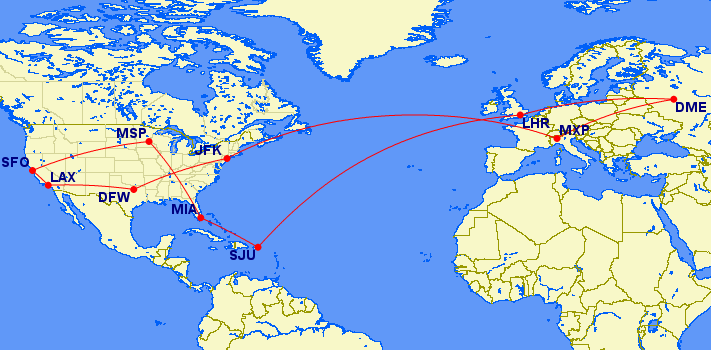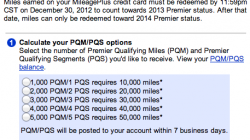For years we’ve heard about the death of the mileage run — the idea that it might be worthwhile to book a very cheap flight to travel a long distance solely for the miles earned by the trip. I used to do several of these a year, traveling to foreign countries and spending a few hours in the airport before returning home. Sure, sometimes I’d actually go into town for a few days to see the sites (a “mileage jog”) but the point was the same: this flight was booked solely because it was a cheap way to earn miles, not because I had any real interest in visiting the destination.
With the advent of elite qualifying dollars at the big three U.S. carriers, mileage runs lost a lot of meaning for many people. Because you need to fly not just a certain distance but also spend a certain amount of money, it was much harder to earn status. Status is often necessary for the upgrades that made mileage runs comfortable and the bonus multipliers that let you rack up award miles even faster.
The same airlines also switched to a model of issuing award miles based on the price of a ticket. Even if you did have elite status, you’d probably not earn as many miles as before because the entire premise of a mileage run — lots of miles for a cheap ticket — was made nearly impossible.
But this FlyerTalk thread about mileage runs at United Airlines reminded me that there is still good reason to pursue them. That reason just changes depending on the nature of your loyalty program.
A conventional mileage run no longer makes much sense at United Airlines, American Airlines, or Delta Air Lines. Even with a waiver for elite qualifying dollars, you simply can’t earn a lot of award miles from a cheap ticket. Conventional mileage runs do work, however, if you use some other loyalty programs.
Alaska Airlines is a good example. I even wrote a story for their in-flight magazine this month comparing it to the big three and showing how a traditional distance-based loyalty program can help you earn more miles faster. (You can find a digital copy here on page 45 if you’re not flying with them this July.) But Alaska Mileage Plan is not the only distance-based loyalty program. Others such as Singapore Airlines KrisFlyer and Lufthansa Miles & More are partners with U.S. carriers, so you could fly United, for example, and credit your ticket to one of these.

The caveat is that international carriers often have aggressive sliding scales for cheaper fares. While still issuing miles based on distance, they may not issue 100% of distance. It could be 10% for the very cheap fares and 300% for the very expensive fares, with everything else in between. But in general, you can fly one airline and credit to your miles to another with a more favorable rewards program. There are former MileagePlus members I know who still fly United regularly but now have status with KrisFlyer. I strongly recommend you read up on the rules of a program and consider your travel habits before making a switch like this.
Another way in which mileage runs still make sense gets back to the point raised in that FlyerTalk thread. What if you have plenty of elite qualifying miles but not enough elite qualifying dollars? You could get a waiver, but this isn’t possible for every person and every program.
The only way to get elite qualifying dollars, then, is to fly. Ironically, the mileage run becomes about spending the most amount of money. You might even prefer to travel the shortest distance so as to minimize the inconvenience of taking an extra flight. Personally, I would try to spot this issue well in advance and just buy a more expensive ticket for a flight you already plan to take. But you get the point: You are still booking unnecessary travel to reach a certain threshold set by the airline and doing so in the most efficient manner possible.
Does this new, inverted mileage run even make sense? It can. That one flight may be expensive, but if the extra status means you earn 11 miles per dollar instead of 8 for the next year, that extra 3 miles per dollar could add up to several thousand miles worth a couple hundred bucks. You could get waivers on award cancellation and change fees. You could receive more complimentary upgrades. You could save time in line.
Status is still worth something. Maybe not what it was and maybe not to the same people, but there are times that mileage runs make sense. In my case, I’m glad I can still book the traditional mileage run with Alaska Airlines. Those who fly with other airlines out of preference or obligation will want to consider their own goals and whether a mileage run — of any sort — might make sense as we enter the second half of 2017.
Map generated by the Great Circle Mapper – copyright © Karl L. Swartz



